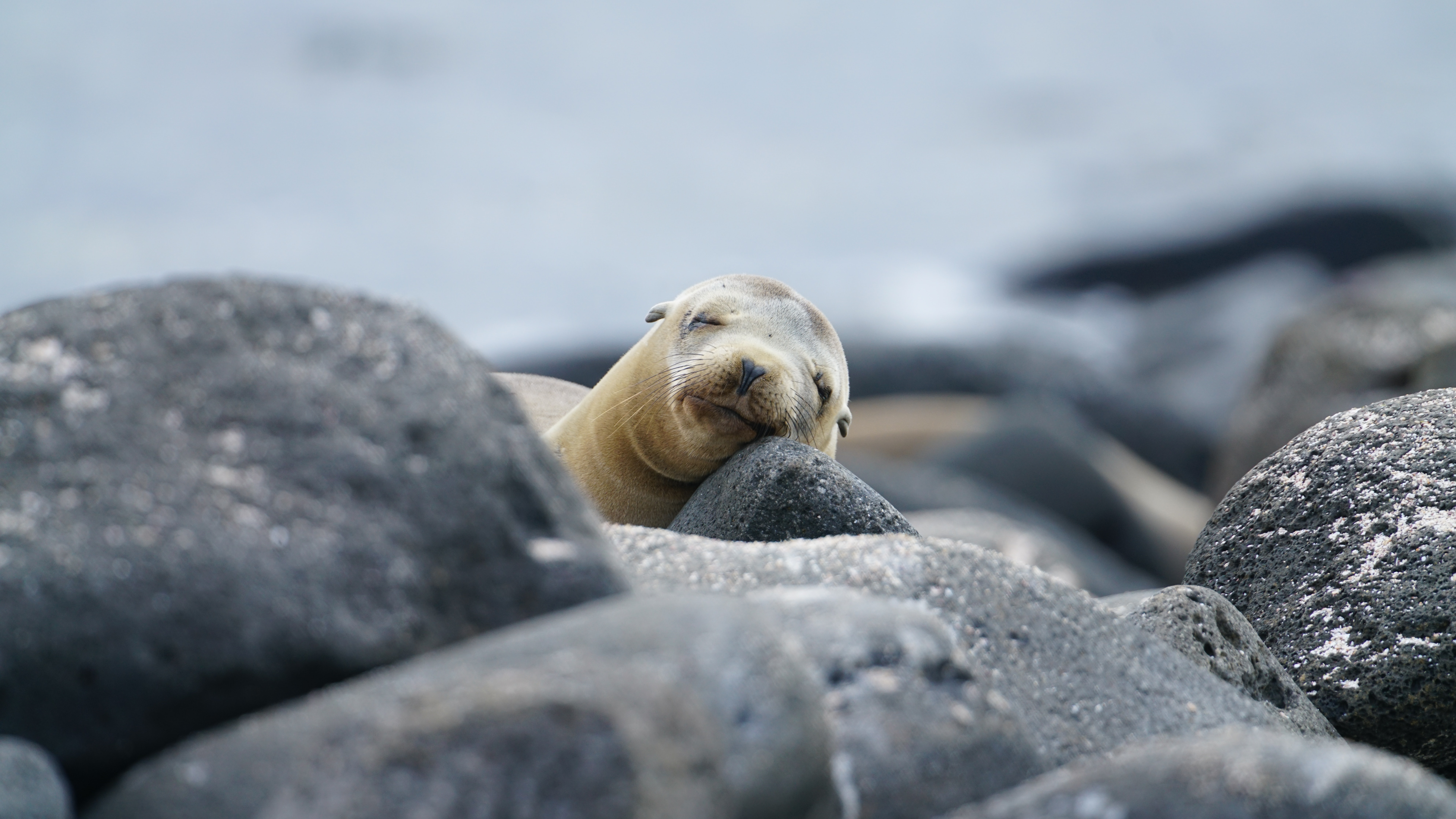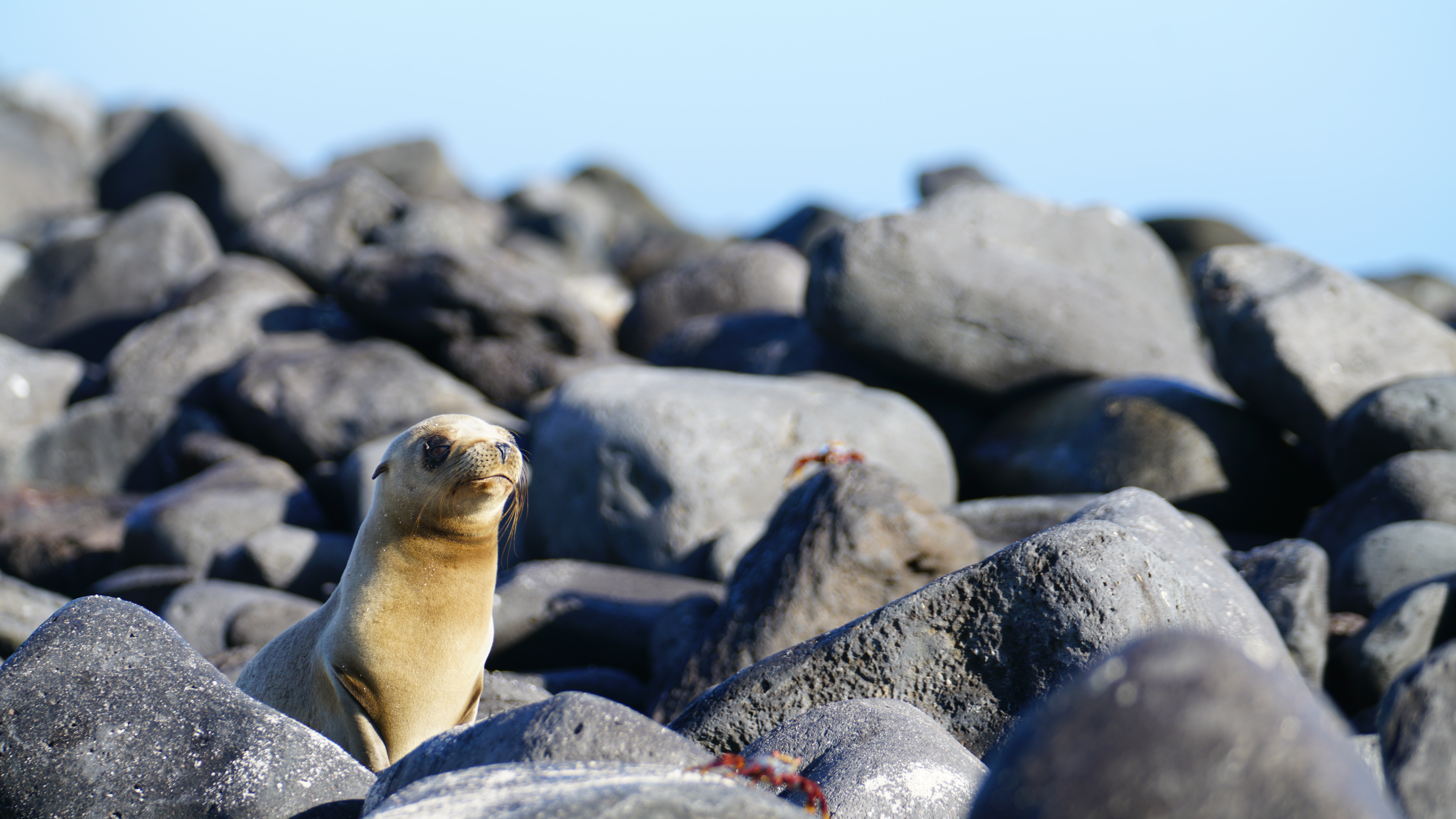Shy sea lions may have a better shot at survival than their rambunctious siblings
Shier pups exhibited more variation in their behavior, a sign of an ability to adapt
Photo by Jackman Chiu on Unsplash
Animal behavior is often consistent. Some individuals are consistently more aggressive, more exploratory, or more bold than others. It's also repeatable: individuals behave consistently through time — they are shy when they are young and remain shy when adults. Animals have personalities just as much as humans. In populations where it is possible to study behavioral flexibility and environmental changes, researchers are finding out that different personalities may have different advantages.
A long-term study of Galápagos sea lions by a group at the Bielefeld University in Germany and Ecuadorian researchers sheds light on personality and response to stress. The Galápagos sea lions are an ideal large mammal species to study in the wild because they evolved in isolation from land predators, so they don't fear humans and can be studied with minimal disturbance. The group has been studying a breeding population on the small islet of Caamaño in the Galapagos Islands since 2003, allowing them to identify individuals and report environmental changes and human disturbances.

Galápagos sea lions evolved in isolation from land predators, so they don't fear humans and can be studied with minimal disturbance
Photo by Mac Gaither on Unsplash
Various animal personality types are selected under different circumstances. Which personality types are better adapted to which circumstances depend on the species (or even the population) and how they cope with changes. Just like the brain has this ability to reorganize itself up to a point, behavior also has room for variation in each individual, and some individuals are more plastic (more able to reorganize) than others. But this variation and rearranging is limited. You cannot expect an introverted person to become extroverted, but you can create situations in which this person would be more comfortable and more likely to, for example, interact with strangers.
The researchers used behavioral tests to measure how bold individual pups were. In a "novel object" test, the sea lion pups were presented with something new but nonthreatening and their reactions were recorded. For this tame population of Galapágos sea lions, the researchers used a 4.5m pole with a GoPro camera and a tennis ball-sized ball of different colors attached to the end. While hiding behind boulders or bushes, the experimenter presented the apparatus to a sea lion pup. The pups showed a spectrum of reactions from simply avoiding the ball to approaching it. This test was done twice when the pup was alone while the mother was out foraging and repeated twice when the mother was present.
The "human approach" test was designed to be a risk test. Here, the experimenter walked toward a pup from a distance of 5 meters, and boldness was scored depending on whether the pup moved away or approached the human.
The pups that were shy during the novel object test were also shy during the human approach test, showing the consistency of their behavioral reactions.
In the novel object test, shy pups fled when they were on their own during a test, but reduced flee behavior when tested again in the presence of mothers. Bold pups were bold no matter what: they approached the ball and the human whether or not mom was present. This indicates that shy pups showed more plasticity in their behavior than bolder pups. That is, shier pups had a broader range of behavioral responses which matched with different contexts.
Plasticity is important for life under climate change. Therefore, the researchers believe that, in this case, the shy pups might be better prepared for the future. They based this conclusion on work from past research suggesting that coping styles and level of behavioral plasticity in variable contexts will influence the ability to respond to changing conditions.
Still, they go on to say: “It is unclear whether plasticity is enough to cope with severe novel threats compounded by anthropogenic disturbance. Measurements of animal personality may help us interpret whether individual Galápagos sea lions may vary in their coping style to further human encroachment and disturbances.”
Galápagos sea lions live in an unpredictable environment with extreme variation in food abundance. Their numbers are decreasing and this might be an explanation for why: bold individuals are taking risks and not adapting well to the changes. At the same time, there might not be enough shy individuals to replace the population numbers. Big mammals have long generation times, and it might take a while for the shy individuals to replace population numbers. However, in more stable times, bold individuals might be better suited — therefore, this whole spectrum of personality persists in the populations. But in some years, shy individuals will be more common; in other years, the shy ones will prevail.
Animal personality has seldom been explored as a tool for wildlife management and conservation, but it seems to be a parameter worth analyzing, especially in human-altered and disturbed landscapes. Galápagos sea lion numbers are decreasing, and understanding their behavior might help to inform population management strategies. As they are almost top of the food chain, sea lions are important in maintaining the equilibria of prey populations.

In the novel object test, bold pups were bold no matter what
Photo by Mac Gaither on Unsplash
In another species, the elk, scientists from the University of Alberta found out that shier elk individuals were more likely to migrate while bolder individuals were more likely to be year-round residents, habituated to humans. Another study found that shy individuals of non-native bank voles expanding through Ireland — who are less likely to take risks — are more common at the edge of the expansion and probably better at migrating to new environments than bolder individuals.
Scientists of the University of Bielefeld continue to look at other personality traits in the Galápagos sea lion, trying to determine which traits are important for certain populations, and keeping records of these traits throughout the years so they will be able to look for correlations between prevailing personality types and environmental circumstances from year to year. This information will help plan conservation and management efforts and predict how well the population will do in the future.
Peer Commentary
Feedback and follow-up from other members of our community
Matthew Vandermeulen
Biology
University at Buffalo
Interesting study, thanks for the read!
Personality plasticity seems like it would leave room for sea lions to acclimate or adapt to changes in the environment, however, have they tested how shyness affects climate related behaviors directly? For example, are there any behaviors sea lions have that are in response to recent warming that they could compare shy and bold individuals for? I just worry that they may have plasticity in “the novel object” test and the “human approach” test (which seems like it could be predator related), but that this won’t necessarily reflect how the organism responds to a climate related issue.
An additional question: does being shy make you less likely to find a mate than a bold individual? If shy individuals mate less it could make it more difficult for that behavior to become more prevalent unless there is strong natural selection for it (which is tough for organisms with long gestation periods).
Raj Rajeshwar Malinda
Cell Biology, Developmental Biology
I totally agree with the fact as mentioned in the article that animals do have personalities, though we call it their behavior, since it is expressed by their routine patterns just like humans. It is also interesting to me that you have brought up the climate change issue with the survival. However something left uncertain to me while reading the articles was, do they have some database of shy and bold sea lions over the period of this long study to know exactly what is happening there in terms of their population numbers?